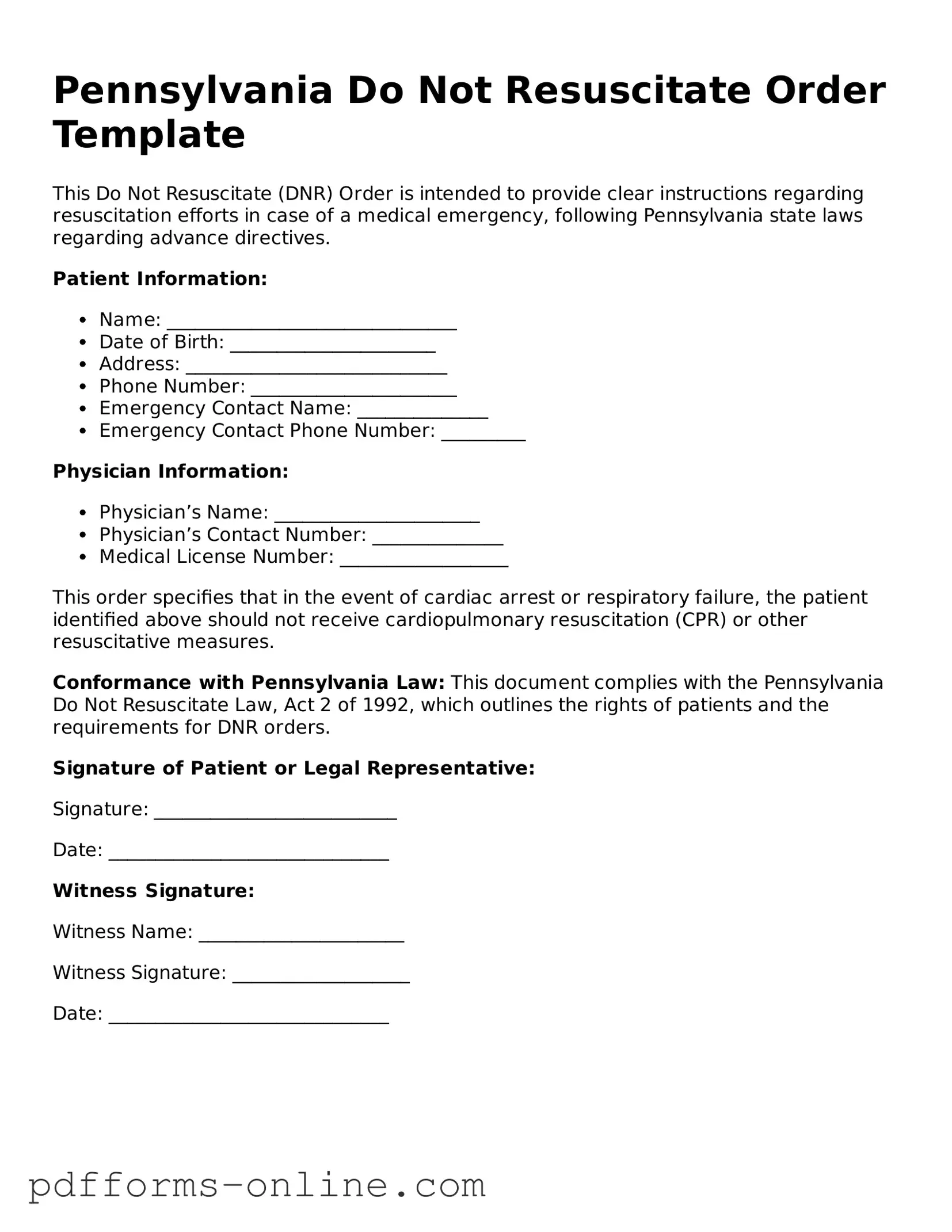The Pennsylvania Do Not Resuscitate (DNR) Order form is similar to the Advance Healthcare Directive. An Advance Healthcare Directive allows individuals to outline their preferences regarding medical treatment and appoint a healthcare proxy. Like the DNR, it serves to communicate a person's wishes in situations where they cannot speak for themselves, ensuring that their medical care aligns with their values and desires.
Another document similar to the DNR is the Physician Orders for Life-Sustaining Treatment (POLST) form. POLST is a medical order that specifies a patient's preferences for treatments such as resuscitation, intubation, and other life-sustaining measures. Both the DNR and POLST aim to provide clarity on a patient's wishes, but POLST is typically more comprehensive and includes additional treatment options.
The Living Will is also comparable to the DNR form. A Living Will is a legal document that details an individual's preferences for end-of-life care. While a DNR specifically addresses resuscitation efforts, a Living Will covers a broader range of medical interventions, allowing individuals to express their wishes regarding life support, pain management, and other critical decisions.
The Healthcare Power of Attorney (POA) shares similarities with the DNR as well. This document designates a trusted individual to make healthcare decisions on behalf of someone who is incapacitated. While the DNR specifies the refusal of resuscitation, the Healthcare POA empowers the appointed agent to make decisions that align with the patient’s overall healthcare preferences.
In addition, the Medical Order for Life-Sustaining Treatment (MOLST) form is akin to the DNR. Like POLST, MOLST is a physician's order that outlines a patient's preferences for life-sustaining treatment. Both documents serve to ensure that healthcare providers understand and respect the patient's wishes, although MOLST may be more commonly used in certain states.
The Comfort Care Order is another document that aligns with the principles of a DNR. This order emphasizes the provision of comfort and palliative care rather than aggressive life-saving measures. It directs healthcare providers to focus on alleviating pain and enhancing quality of life, similar to the intentions behind a DNR.
The Do Not Intubate (DNI) order is closely related to the DNR. A DNI order specifically instructs healthcare providers not to perform intubation in the event of respiratory failure. While a DNR addresses all resuscitation efforts, the DNI focuses solely on airway management, thus complementing the overall goals of the DNR.
In the realm of mobile home transactions, the accurate completion of necessary forms is essential to ensure smooth transfers of ownership. For instance, the documentonline.org/blank-new-york-mobile-home-bill-of-sale serves as a pivotal resource for buyers and sellers alike, documenting critical details about the property being sold while providing assurance that the transaction is recorded properly. Understanding the importance of such documents can alleviate potential disputes and streamline the selling process.
The End-of-Life Care Plan is also comparable to the DNR form. This plan outlines a patient's preferences for care during their final days. It encompasses various aspects of care, including pain management and emotional support, while a DNR specifically addresses resuscitation efforts, making both documents essential for end-of-life decision-making.
Finally, the Hospice Care Plan shares similarities with the DNR. A Hospice Care Plan is designed for individuals with terminal illnesses, focusing on comfort and quality of life. It includes directives that may overlap with those in a DNR, as both prioritize the patient’s wishes regarding aggressive treatments and emphasize compassionate care.
